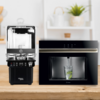Insect traps play an indispensable role in upholding impeccable hygiene standards within the bustling settings of restaurants and hotels. When complemented by periodic insecticide applications from qualified professionals, these traps become essential tools in maintaining the cleanliness and integrity of an establishment. This becomes especially vital for businesses that welcome a high volume of daily patrons, making them particularly susceptible to potential insect infestations. An environment plagued by insect pests not only endangers the health and safety of guests but also casts a dark shadow on the reputation of the business itself. Therefore, the strategic investment in effective insect traps emerges as a cornerstone for the success and credibility of restaurants and hotels.
But why exactly do we need insect traps?
The significance of insect traps within the hospitality industry cannot be overstated. Insects such as flies, mosquitoes, and cockroaches not only mar the visual appeal of an establishment but also serve as vectors for harmful bacteria and pathogens. With a constant influx of food and customers, these pests pose a substantial health hazard if left uncontrolled. Insecticides, when applied proactively, offer a formidable defense against infestations and ensure the maintenance of a pristine and hygienic environment. This, in turn, boosts customer confidence and loyalty. Additionally, it's worth noting that government food control agencies can impose fines on establishments found with infestations, potentially affecting their flow of customers due to concerns about food safety ratings.
So, what types of insect traps are at our disposal?
Restaurants and hotels employ various types of insect traps to suit their unique needs. Among these options, the most popular choices include light traps, electric fly zappers, and sticky traps. Presently, LED light traps have emerged as the preferred choice due to their enhanced efficiency in catching flies, delivering approximately a 73% reduction in energy consumption and carbon emissions when compared to traditional UV light traps. Light traps work by attracting flying insects and capturing them on a glue board, while electric fly traps provide a swift and safe means of pest elimination. Sticky traps, on the other hand, excel at discreetly capturing crawling insects. Combining these methods with periodic, food-safe insecticide applications ensures comprehensive pest control throughout the entire premises.
For optimal hygiene, it's recommended to use light traps in areas where food is handled. Electric fly zappers are better suited for locations such as garbage rooms or any areas where food is not directly processed. When selecting light traps, opt for a more discreet front-of-house model for dining areas, as these are designed to blend seamlessly with the decor and not draw immediate attention from customers.
How should you install these traps?
To maximize the effectiveness of insect traps, proper installation is crucial. Mounting the units on the wall at a height of approximately 2 meters (6.5 feet) from the ground, aligning with the typical flight path of flies, ensures easy access for servicing. Care should be taken to avoid obstructive or potentially damaging placements. The strategic positioning of units can divert flies away from critical areas, intercepting them before they enter, thus safeguarding the target areas you aim to protect. It is of utmost importance not to place these units directly over food preparation, packaging, or processing areas, ensuring the maintenance of hygiene and safety standards. For sticky traps, strategic placement is essential to effectively capture crawling pests.
Additionally, avoid installing fly traps adjacent to natural sources of UVA light e.g. sunlight or near frequently opened doors. Placing fly traps near windows or strong sunlight may divert flies towards the natural light source, reducing the trap's effectiveness. Similarly, traps near frequently opened doors can disrupt the trapping process, allowing flies to escape and diminishing the trap's efficiency in capturing them. To optimize the effectiveness of your fly traps, steer clear of these placement scenarios.
How should you maintain these traps?
Consistent maintenance of insect traps is paramount to ensure they operate at peak performance. The strategic choice of installing light traps at a height of 2 meters simplifies inspections, eliminating the need for a ladder to assess the glue board's status. This height allows for easy visual monitoring as you pass by, facilitating prompt glue board replacements when necessary. Sticky traps should be cleaned and replaced regularly, ideally every 30 days. Furthermore, it's advisable to routinely inspect electric fly traps for any debris or deceased insects that may impede their function. Always ensure that the bulbs in your light traps are functioning correctly, as damaged bulbs can significantly diminish their effectiveness in attracting insects.
Conclusion?
In conclusion, investing in insect traps for commercial use constitutes a prudent decision for restaurants and hotels. These traps play a pivotal role in upholding hygiene standards, protecting customer health, and preserving the establishment's hard-earned reputation. By implementing the right insecticides and positioning the traps strategically, businesses can create a safe and inviting environment, fostering patron loyalty and positive word-of-mouth. Regular maintenance ensures that these essential tools remain efficient in their mission of safeguarding against unwanted pests. Explore our diverse range of insect traps for both commercial and residential use to fortify your commitment to hygiene and reputation.


 Food & Beverage
Food & Beverage
 Kitchen & Bar Equipment
Kitchen & Bar Equipment
 Smallware & Accessories
Smallware & Accessories
 Deals
Deals
 Same Day Delivery
Same Day Delivery










